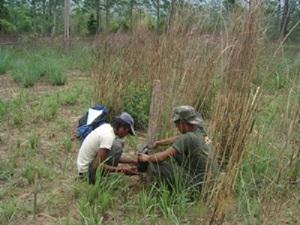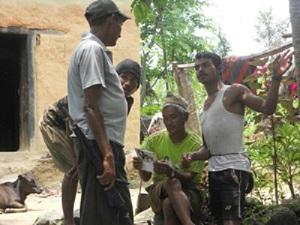Promod Tandan
The aim of the project is to monitor small mammals diversity focussing on pygmy hog, they will assess the poaching status and potential threats to small mammals in the Babai valley.

Small mammals are indicator of ecological condition and wildlife habitat value and their population are linked to climatic changes, habitat alteration, and natural disturbances (Cardenas & Robbins-Wade 1985; Garland, 2007; RMA, 2009). But their scientific data list and conservation threats including their poaching status is still lacking on the Babai valley, which is the only restricted area of Terai region of Nepal. Further the effect of annual park burning to these species has not been studied before (ZSL, 2003; Tandan, 2009) and a suspected sign of pygmy hog(Porcula salvanius; Thought to be extinct from Nepal) was detected in the study by Tandan (2009). Therefore to address these issues in the study area, the project has been conceptualized.

The main objectives of the project are:
1. Small mammals monitoring and for generating base line information on their diversity with their local use in the Babai valley of Bardia national park.
2. Study on the feasible presence of Pygmy hog (Porcula salvanius) in the Babai Valley of Bardia National Park.
3. Assess the poaching status and potential threats to small mammals with the effect of annual burning management practice in the study area.
Methodology:
i) Transect line will be drawn for the searching pellets of small mammals and suspected pellets of Pygmy hog (Maheshwaran, 2000; Yadav, 2006 Cited in Tandan, 2009), Which would be later identified from the experts.
ii) Camera Trapping are ideal for identifying presence absence study of the species inhabiting in particular area (Karanth, 1995; van Schaif & Griffiths, 1996; Karanth & Nichols, 1998; O’ Brien etal. , 2003). Therefore Study area will be divided in 2 sq. km. Blocks. In each site camera will be placed for 20 days for total 100 days in different habitats (MacKenzie et al. 2006).
4. Questionnaire survey: Local questionnaire survey and the direct field visit in the 3 different adjacent concerned villages of Babai valley will be performed for of 30 days for diversity, uses, poaching intensity, trend/cause of poaching (Past/present)of small mammals, local perception towards small mammals, threats on the wildlife species with annual burning management practice effect on small mammals in the study area.
The project will commence from July 2010 and it is hoped that the project will deliver the data that would be of immense value for the management intervention for the long term conservation of small mammals in the study area.